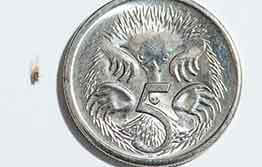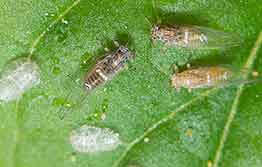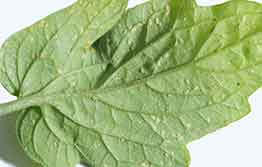New pest of tomatoes and potatoes found in WA
The Department of Agriculture and Food, Western Australia is undertaking surveillance in commercial crops and backyard gardens following the detection of a vegetable pest in the Perth area. Department Acting Chief Plant Protection Officer Sonya Broughton said officers were working with the horticulture industry to respond to the exotic plant pest, tomato potato psyllid (Bactericera cockerelli).

“A pest has been detected in a capsicum crop in a commercial property north of Perth, backyard tomatoes and eggplants in Belmont and backyard tomatoes at two properties in Mount Hawthorn and in chillies at a property in Palmyra,” Dr Broughton said.
“The department has quarantined the impacted properties to restrict the movement of vegetable and plant material off these properties.“DNA barcoding results today have confirmed the presence of the pest. This is the first time the psyllid has been detected in Australia.”
This insect pest is a significant production pest in other countries where it is present, including the USA, Central America and New Zealand.
Tomato potato psyllid attacks a range of plants in the Solanaceae family including potato, tomato, eggplant, capsicum, chilli and tamarillo, along with sweet potato.

Dr Broughton said department officers were surveying properties within the wider metropolitan area to determine the location of the pest.
Commercial vegetable producers and backyard growers are urged to check for signs of the psyllid and report any unusual detections to the department’s MyPestGuide Reporter app.
Reporting options are also available on the department website or by contacting the department’s Pest and Disease Information Service info@agric.wa.gov.au or call 1800 084 881.
“Tomato potato psyllid is a tiny sap-sucking insect. Adult psyllids resemble small winged aphids in appearance and are about 3mm long,” Dr Broughton said.
“The body is brownish and has white or yellowish markings on the thorax and a broad white band on the abdomen. Its wings are transparent and held vertically over the body.

“Symptoms of damage on plants can include stunting, yellowing and purpling of leaves, distorted leaf growth and stem death.
“Growers who suspect the pest is on their property are advised not to spray for the pest or disturb plants until their crops have been surveyed and an appropriate treatment has been identified.”
The tomato potato psyllid can carry the bacterium “Candidatus Liberibacter solanacearum”, causing the ‘zebra chip’ disease in potato. The bacterium has not been found in any samples taken to date.
VegetablesWA CEO John Shannon said WA’s horticulture industry was critically important to the state’s economy.
“We have access to international expertise which will help us to best respond to this new pest and we will be work closely with the department to share this expertise with growers,” Mr Shannon said.
More information, including how to look for and report the pest, is available on the Department of Agriculture and Food WA website.
